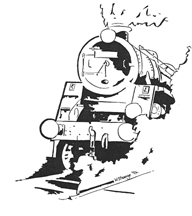





Kilve (OO) | |
|
Background Story Somerset is somewhere you would probably never think of if you mentioned an Oil Rush. In fact the words Somerset and Rush very rarely share the same sentence. But it did happen. Early in the 20th century deposits of shale on the Somerset coast between Kilve and Watchet were examined for the oil and in 1923 a company called "Shaline Ltd" started trials. They build a small Oil Retort close the sea at Kilve and began extracting an average of 30 barrels of oil a day. So successful was the venture that the Great Western Railway commenced the building of a new line from Bridgwater to Watchet within a few months and by the summer of 1924 it was open to both freight and passenger traffic with sidings for the oil retort at Kilve station. The line branched from the main line just north of Bridgwater station and had intermediate stations at Cannington, Nether Stowey, Kilve and West Quantoxhead before reaching Watchet where it joined the West Somerset Railway. Unfortunately the increasing costs involved in extracting the oil from the shale soon took their toll and by 1936 Shaline Ltd pulled out. What was left was bought by a local firm Stevens and Son in 1947 and shale oil extraction continued under their ownership, albeit on a much reduced level. |
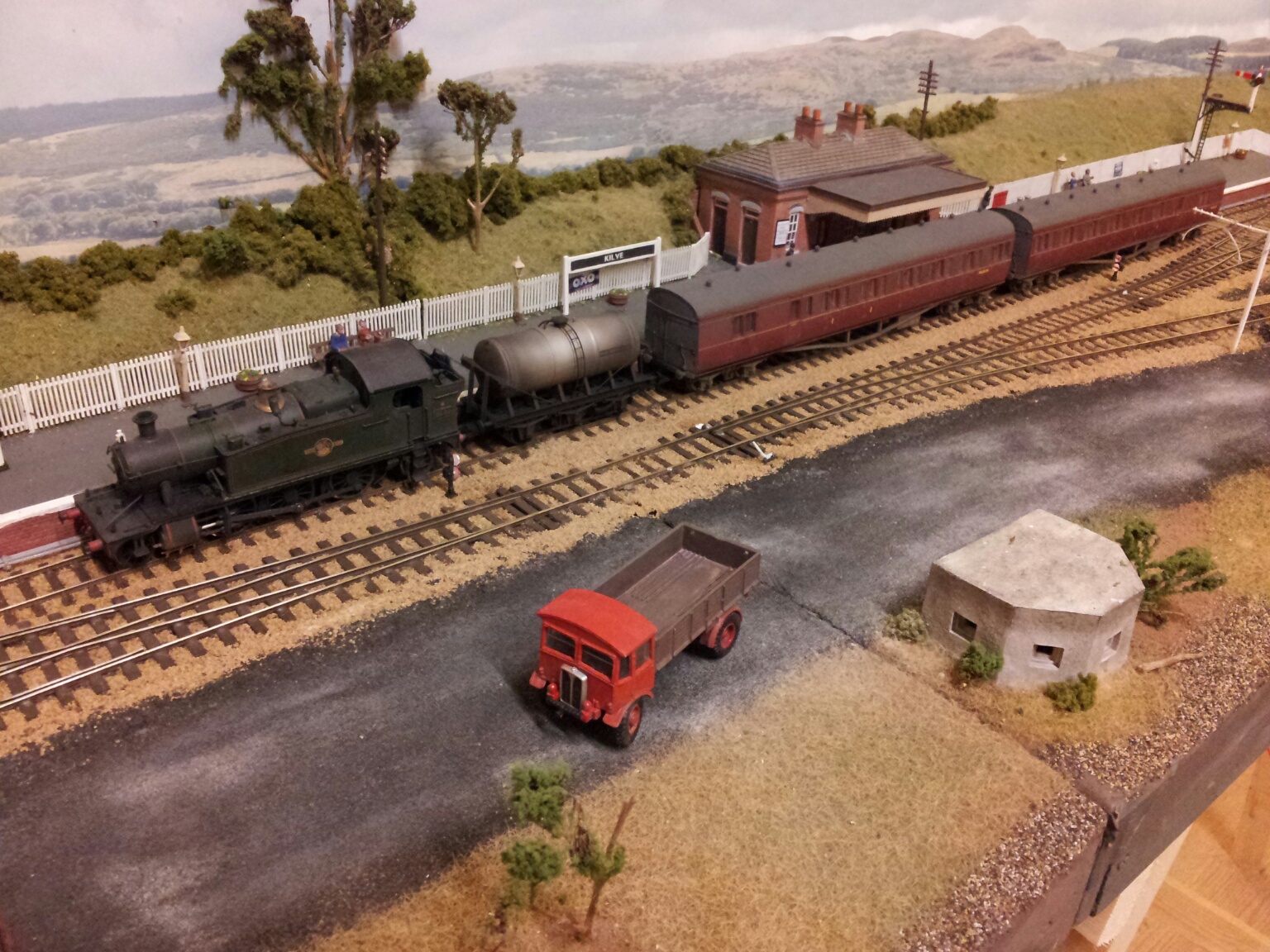
|
|
Kilve station still plods along and although the oil retort stands derelict as a reminder of more prosperous days there is still enough to keep things active.
The local fishermen bring in a daily catch which can usually fill a wagon and the reduced flow of oil barrels from East Quantoxhead are now brought in by lorry
to be loaded here. Fossil hunters regularly stop here and spend time staying in the local village as they explore the rocky coast, and a new activity centre in
the village means a steady flow of children coming and going. The sidings for the oil retort are now used for the loading of fish or for the storage of engineer's
vehicles when not in use. Now this isn't all fantasy. The oil story is true but thankfully for this beautiful stretch of coastline the venture faltered only a year after it started. The cost involved in extracting the small amounts of oil and the oils low quality compared to other areas of the UK made it uneconomical and so by the winter of 1924 the oil retort at Kilve seems to have been shut down. As far as the line goes the GWR did indeed have plans to build the line but the sudden stop in oil production caused them to re-think and so it never came to fruition. The small harbour is also based on facts in that some years ago timbers were found that show a small harbour has been built there in the 18th century, though this has long since vanished.
|
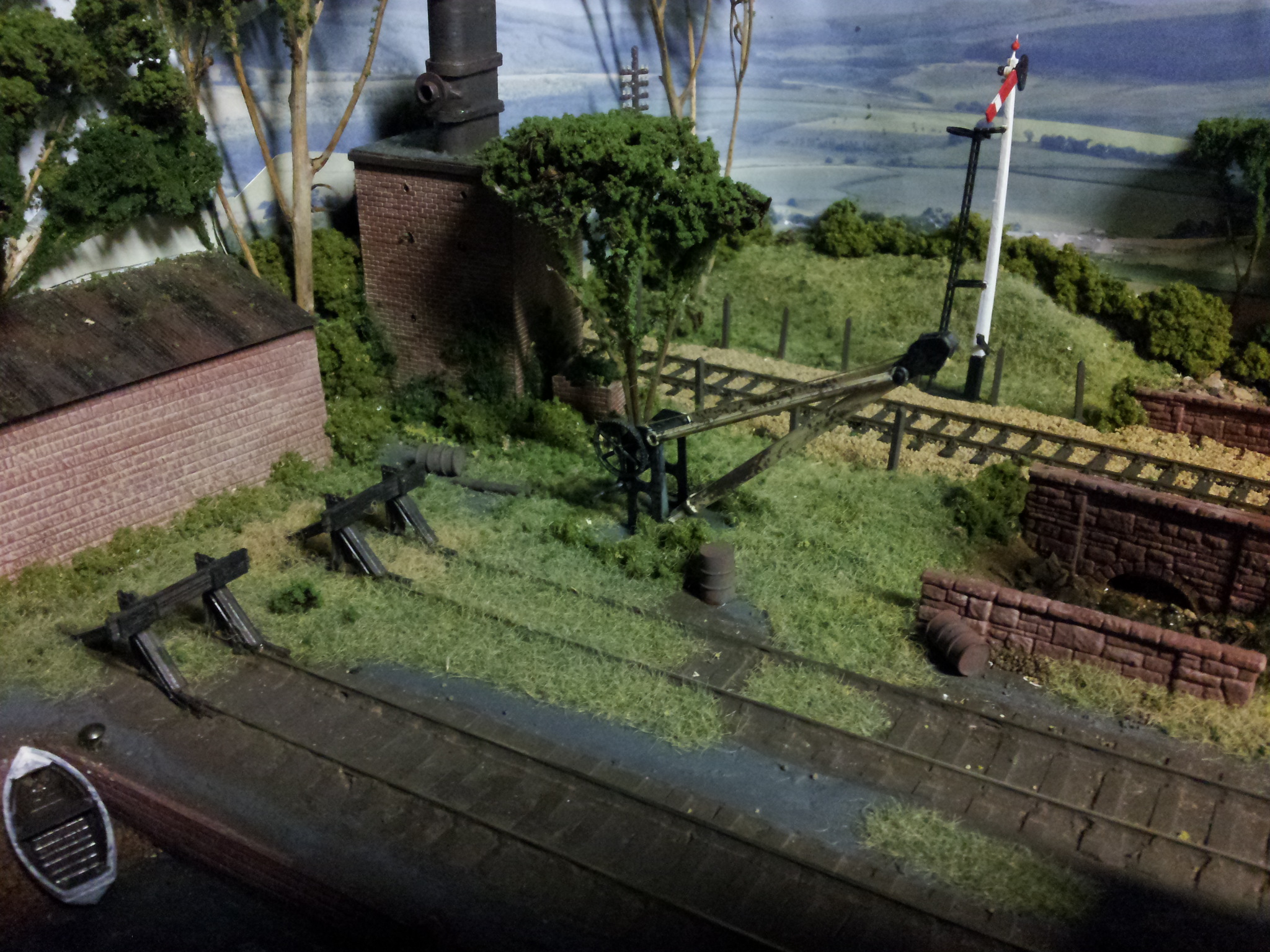
|
|
Construction Details The boards are 6mm ply on a 2 x 1 frame. Wiring is for DCC though with isolating switches so it can be used as DC. The track is SMP with hand built points, all of which are operated by wire-in-tube with toggle switches for polarity changing. The contours are shaped polystyrene with a craft paper and PVA coating. Scenery is a combination of all sorts I had to hand and picked up at exhibitions but the dirt is an exact match to the soil around the Kilve area. I know that, because that's what it is. On one visit I scooped up a cup full of soil and on return home sieved and dried it. It makes it look local and best of all, it's free. | |
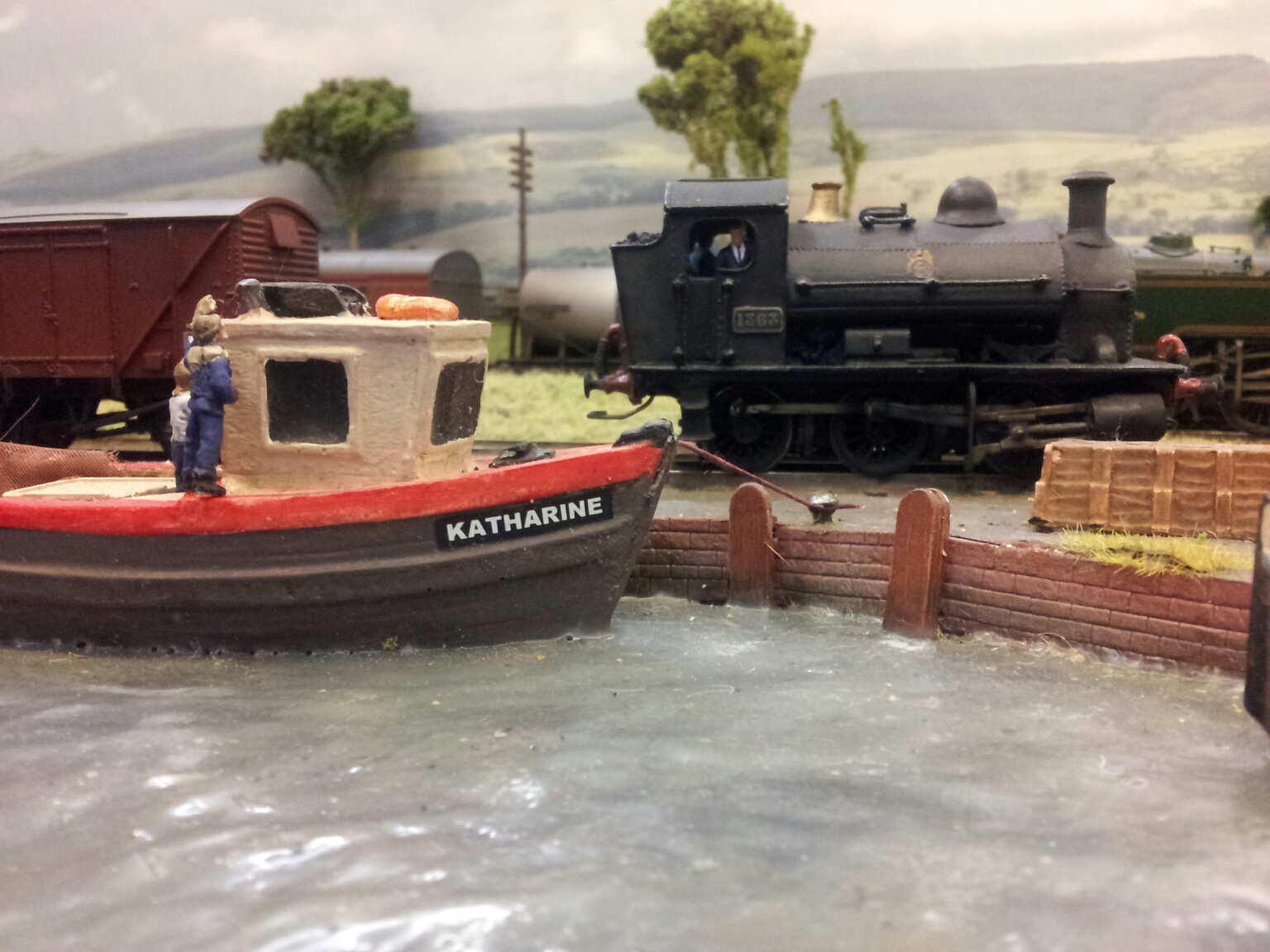
|
The sea is as simple as I could make it - PVA glue. By painting the sea bed grey (the same colour as the Bristol Channel) and then adding many coats of PVA as
thickly and roughly as I could it built up to what I think is a very effective seascape. The river is the same method. The structures are from the usual brands of ready to plant buildings but all have been repainted in Western Region colours and
weathered with some modification as needed. Two that are scratch built are the Oil retort and the stone shed at the end of the harbour. Both are taken from
measurements at the actual location of Kilve beach and built from an assortment of plastic-card and scraps. The fiddle yards are 4' long and rotate through 180 degrees allowing the whole train to be turned and sent back again. The electrical contacts are simply crocodile clips connected to cut down brass screws. This allows plenty of running and a fast turnaround at exhibitions. |
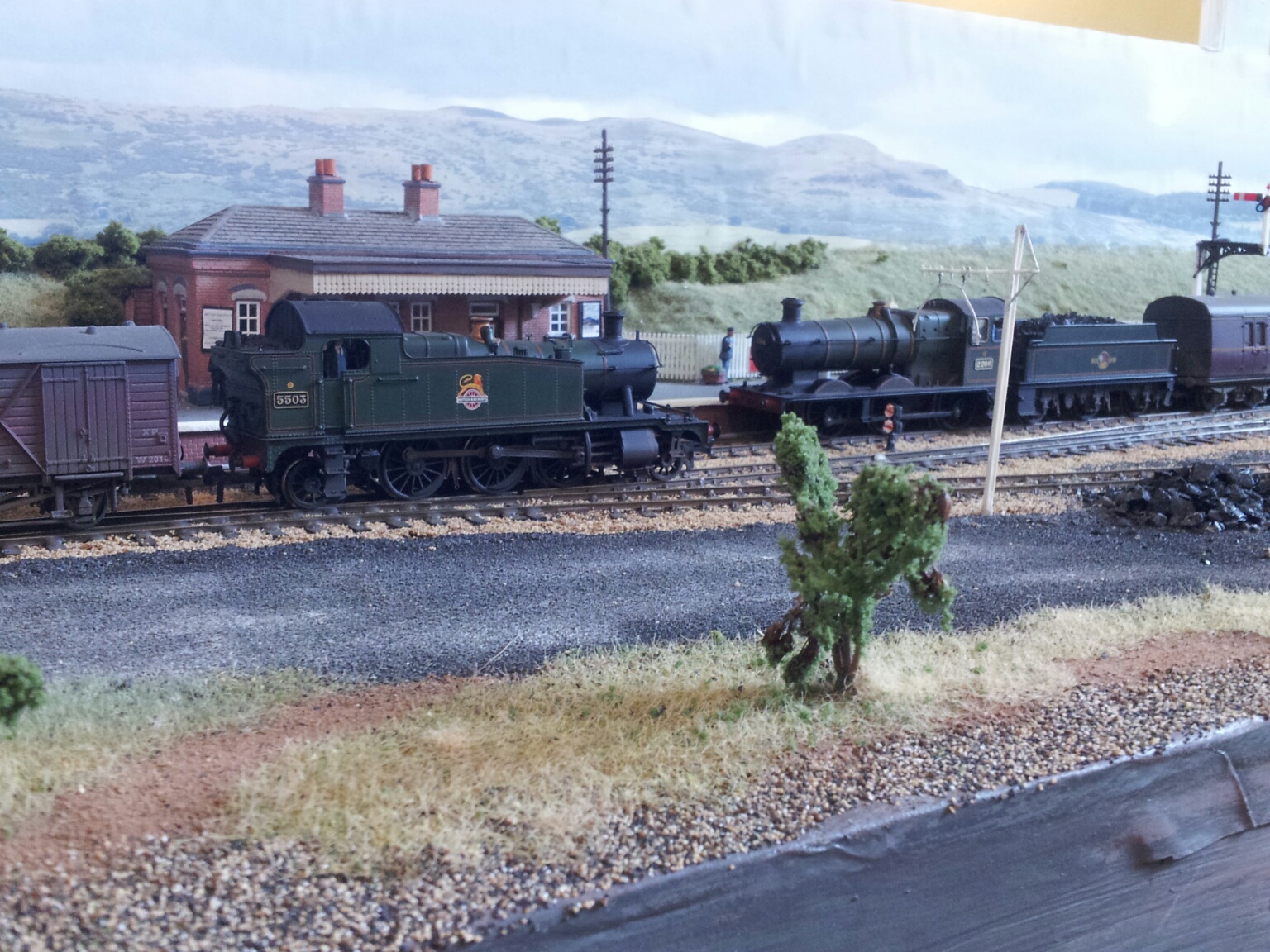
|
Rolling Stock The stock is nearly all ready to run from the main manufacturers, but before running everything is weathered and all locos receive a crew and real coal. Loco lamps are also being added at the time of writing. Some kits have been made and a few self-made items run though such as the milk road-rail tanker. Dates for running range from the mid-1950's to mid-1960's with a steam and diesel, along with a change of coach livery depending on which is running. Typical stock running will range from Pannier and Prairie tanks, Collette goods and 43xx Moguls through to DMU's and class 22 Diesels, all very typical of the branch lines around the Taunton area and all are renumbered as Taunton base engines. All locos and DMUs are DCC chipped and I use the Gaugemaster Prodigy as I find it does everything I need and is easy to use. |